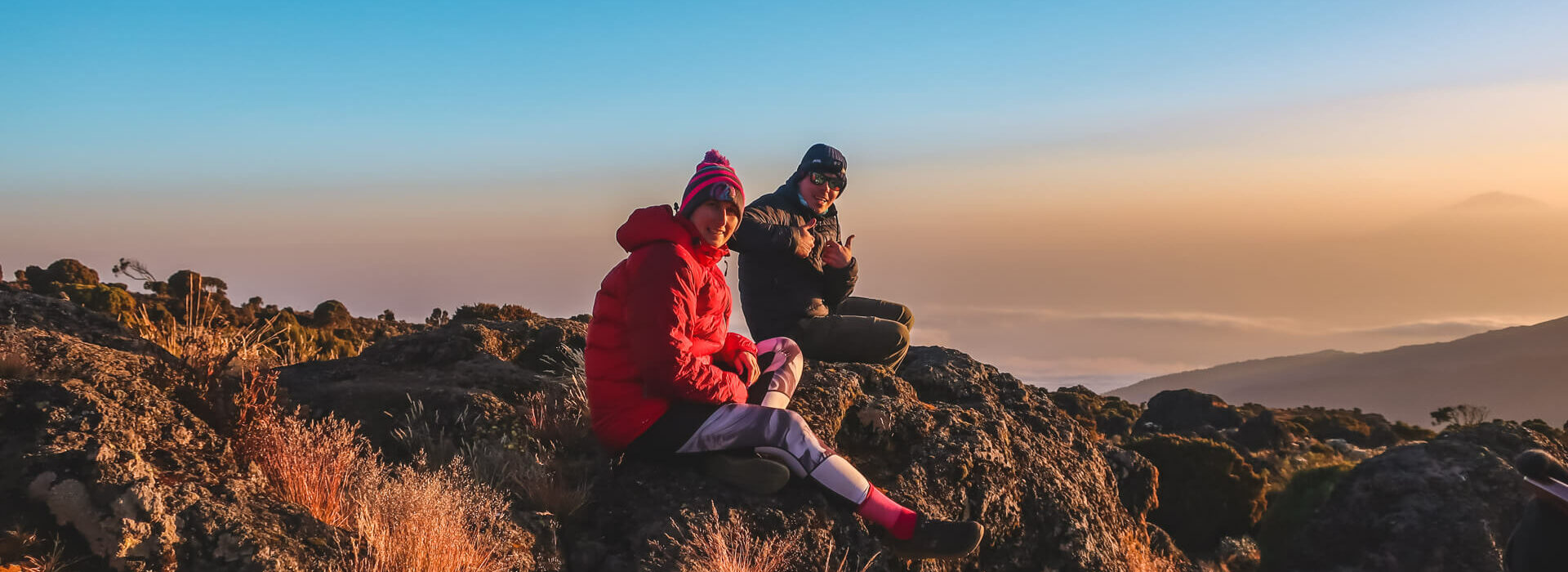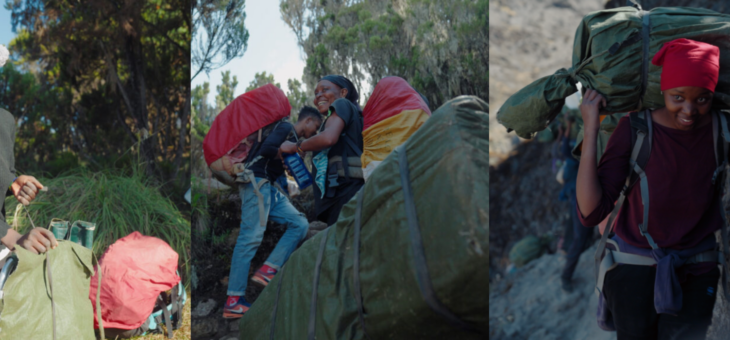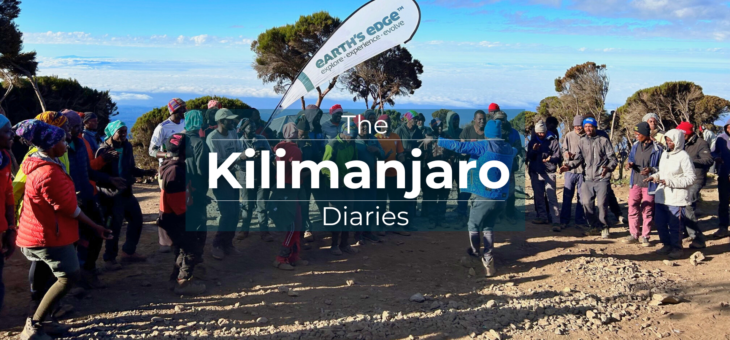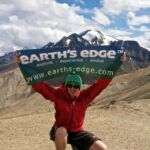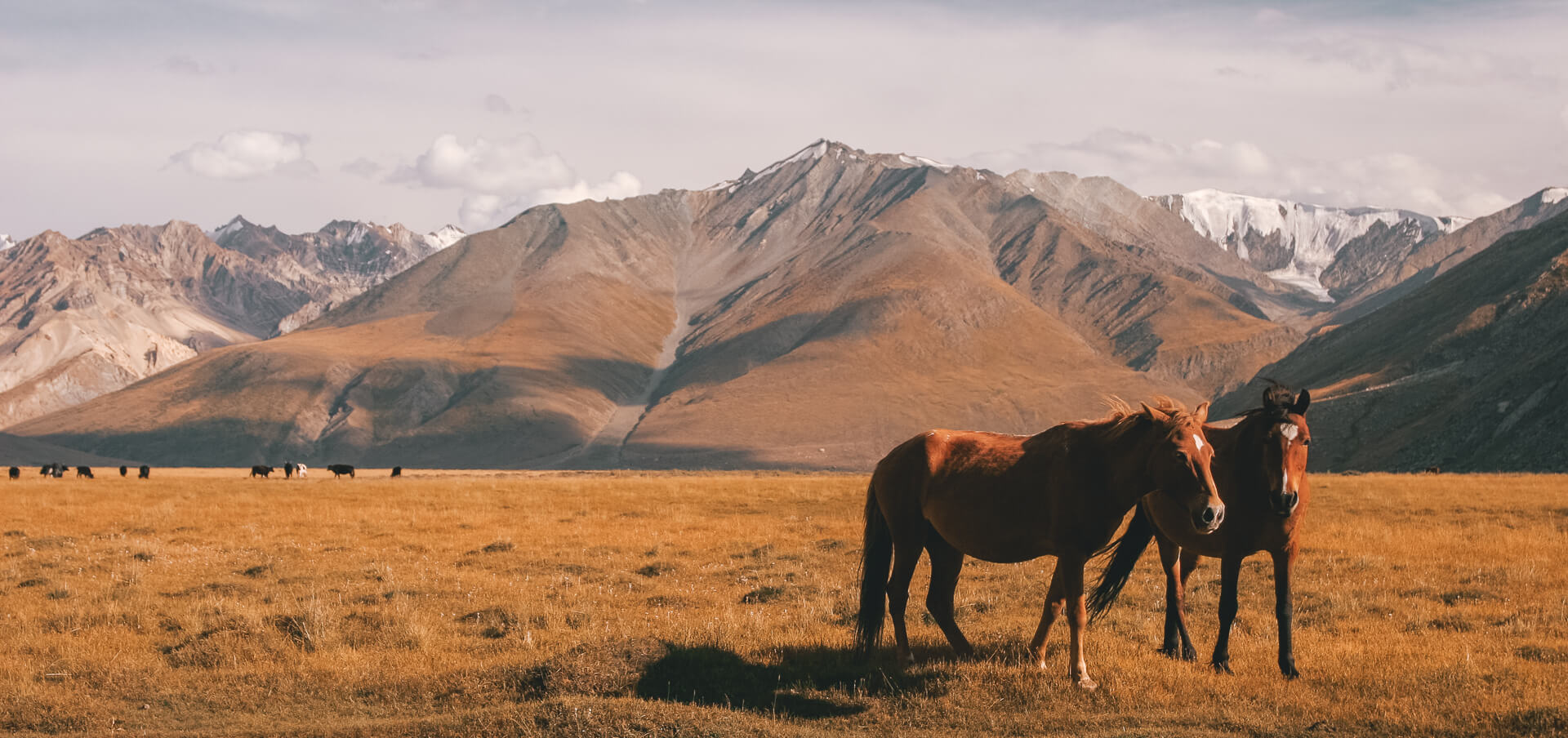This article looks at some of the essential trekking equipment and items to have on two of our most popular treks – Everest Base Camp and Kilimanjaro. Written by one of our expedition leaders – Mary Gunning.

Trekking equipment for Kilimanjaro and Everest Base Camp
So you’ve booked the trip of a lifetime to Kilimanjaro or Everest Base Camp – now what? Two things people often worry about are fitness, nutrition, and equipment.
Spending some time getting your trekking equipment sorted can truly add to the enjoyment of your trip.
Both Kilimanjaro and Everest Base Camp require similar equipment and fitness level s0 what applies to one, applies to the other.
Preparation is key
Before you go on the trip of a lifetime, spend a few moments deciding what’s important to you.
We appreciate the hidden dreams in the recesses of your brain that you’ve been harbouring – secretly or not for weeks or years. They want to ensure you have an amazing trip and before you go that you invest in equipment wisely. It can really make the difference in having a successful and enjoyable trip.
Not everything has to be top of the range, but this is how you should focus on spending. Clever spending will save you lots of heartache down the track. It’s a cliche, but if you buy cheap, you buy twice.
Seek professional retail advice when choosing these items unless you’ve got lots of experience and know exactly what you’re looking for. Shops like the Great Outdoors in Dublin will help you get the right sized stuff for you.
Best footwear for a trekking holiday
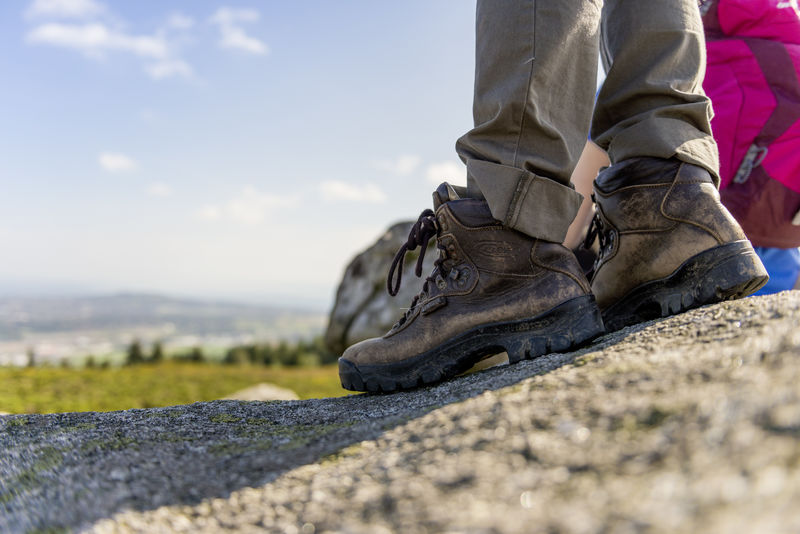
Whether you’re trekking to Everest Base Camp or to the top of Kilimanjaro, if your boots are not right, you will not get there. You are going nowhere without happy feet and happy feet are the key to a successful trip.
Footwear includes boots obviously, but also insoles and socks which people often overlook. You may think the world has gone mad when you find out your socks won’t leave you a lot of change from €20, but if you cheap-out here, you’ll be paying in other ways in the long run and they are more painful!
Don’t order your boots online and don’t just buy what your friends, family or neighbour bought and don’t just buy a size 9, because that’s what you are normally.
Chances are if you’re doing this kind of trip you will use the same footwear for your next adventure. Your feet are as individual as you are – so are your boots. Get your feet measured and get them fitted by a professional.
It’s a free service offered in most reputable outdoor shops. Poor quality footwear or poorly fitting footwear has ended trips for people, so pay attention to this area. This is an area where you go the extra mile because you’ll be walking the extra mile!
Best rucksack for trekking
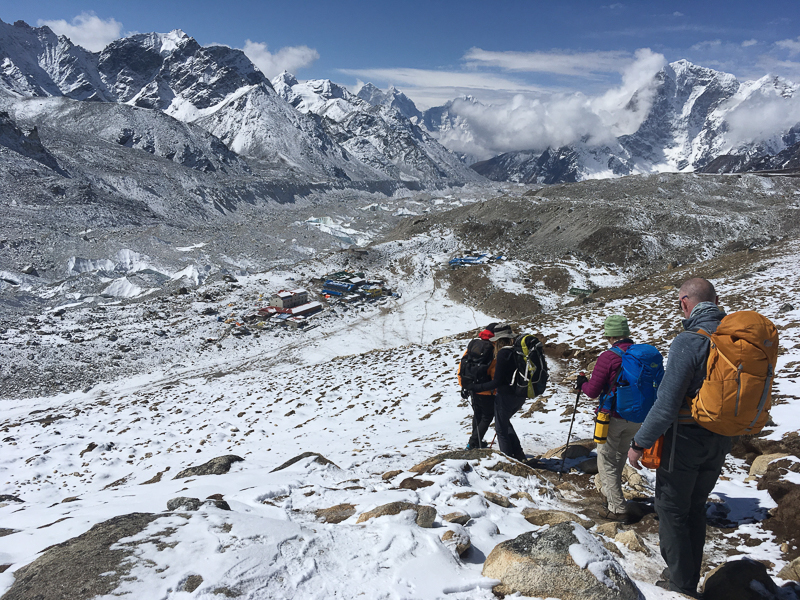
After your feet – you must look after your back – it’s your driving force and your stamina. Did you know that rucksacks (good quality ones) are gender specific?
Did you know that some are adjustable and that there’s a free fitting service available in reputable outdoor retailers?
If you have a rucksack or are going to borrow one, load it with the weight and volume you intend to carry on your trek and go out on numerous days of hillwalking.
So many people suffer needlessly on this one. It may be a good quality bag you’ve borrowed – but if it doesn’t fit you, you’re going to pay for it every day with pure discomfort, which can really affect your trip.
Best gloves for hiking
People generally are the most reluctant to spend money on gloves. Frostnip or Frostbite is not what you’re aiming for as a permanent trip souvenir. Layering rules apply here too so you generally need 2- 3 layers of gloves depending on what layering options you go for.
People can’t take photographs or tie their laces with big mitts on – that’s why you need the inner layers to protect your hands from the cold while you do these tasks quickly. Divide the cost of the gloves by 10 – that’s how much it is to protect each digit. Now, it doesn’t seem such a crazy price.
Gloves are some of the most important pieces of trekking equipment you’ll bring on the expedition. Remember, we do live in a pretty cold county in Ireland, so chances are you’ll use a good pair of gloves come wintertime.
Down Jacket for Kilimanjaro and Everest Base Camp

A down jacket is the lightest and easiest way to stay warm on high mountains. They aren’t too bulky either which gives them a distinct packing and weight advantage. However, you can’t wear down jackets around in the pouring rain. Generally, they are designed for cold, snowy conditions.
You could buy a synthetic equivalent which although also not waterproof still works when it’s wet. Synthetic jackets are cheaper, but they are a lot bulkier and heavier- so that’s the compromise.
Whichever you choose to buy, make sure it’s warm enough – you can get different thicknesses in both so make sure that whatever you choose to buy is (a) warm enough and (b) big enough to go on over all of your other layers. You need to try all layers on and then see what size you are.
Preparation is key. Allow yourself enough time to figure all this out. Another thing with down jackets is they are a winter stock item in most outdoor stores and there are only one or two outdoor retailers that stock them all year round.
Depending on when your trip is, you may have to purchase this item (and the gloves) sooner than you had anticipated.
Best Sleeping Bag for Altitude treks
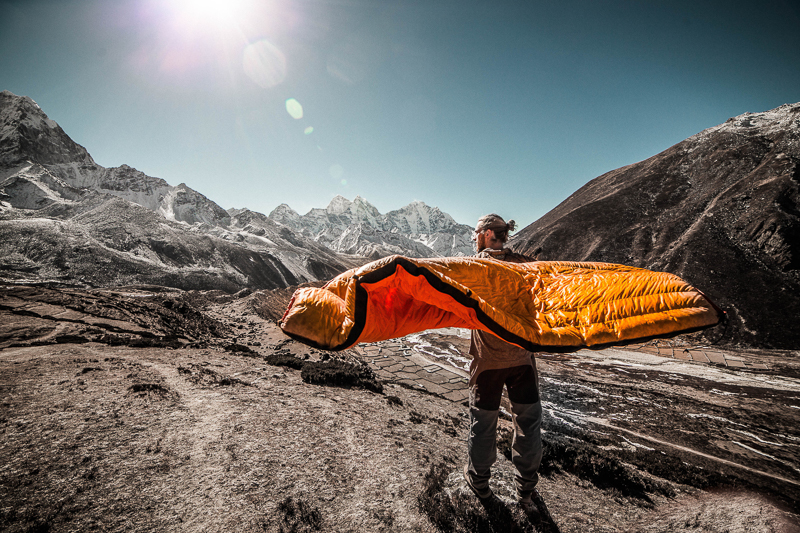
Think of how you are day to day when you miss out on a night’s sleep or even a couple of nights’ sleep. Now imagine that at altitude plus cold and another day of walking ahead.
The key to choosing the right sleeping bag is the comfort temperature rating.
Ignore all other “numbers” and “systems” especially “seasons”. What does a 4-season sleeping bag even mean? The four seasons in Spain are different from four seasons in the Himalayas! Manufacturers have lots of different ratings and it can be confusing. Get a number on it and at least you know where you stand. The comfort temperature rating refers to the temperature that you plan to sleep at.
For Kilimanjaro and Everest Base Camp, we recommend getting at least a -15°c sleeping bag. That’s a -15°c comfort rating. Sleeping bags usually have a comfort rating and an extreme rating. Make sure you’re looking at the correct number!
Again, you can go for a down sleeping bag or a synthetic bag with the same pros and cons as a down jacket versus synthetic. Whichever you consider, buy a sleeping bag liner. It saves you washing your sleeping bag (which can be a bit of a pain) when you get back. 10 years and multiple trips later, you’ll thank yourself for being so crafty, as your tent buddy’s bag is walking out the door by itself with the grime!
Any other questions?
If you have any questions about trekking equipment or would like more intel on any of these items, drop us an email here.
